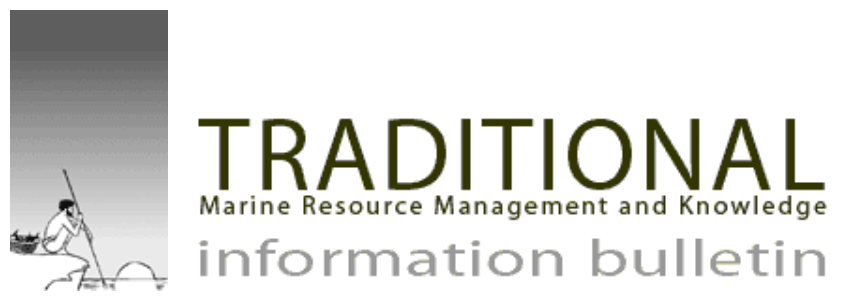
Group Coordinator and Bulletin Editor
Production
Pacific Community, Fisheries Aquaculture and Marine Ecosystems Division, Information Section, SPC, BP D5, 98848 Noumea Cedex, New Caledonia.Note from the editor
This edition contains three contributions. The first, “Developing a common understanding of taxonomy for fisheries management in north Vella Lavella, Solomon Islands,” Philippa Cohen and seven co-authors document the local language names and etymology of marine fishes and invertebrates. Such studies are important because it is essential that partners in any management undertaking share a comprehensive working knowledge of local nomenclature and etymologies. Otherwise, it would not be hard to imagine that effective management, good collaboration and participatory action research would all likely be undermined. However, documenting local language names and etymologies is neither quick nor simple, as exemplified by the work presented here and described succinctly in the authors’ section on methodology.
I would like to take this opportunity to encourage both more field research on local language names and etymology throughout the region and, to ensure prompt dissemination, suggest that the results be submitted for publication to this Information Bulletin. Such research might seem a bit “quaint” and, therefore, be hard to publish in more academically oriented Western journals. In contrast, this Information Bulletin circulates research results quickly within the region where they will be put to immediate practical use and hopefully serve to benefit various types and aspects of fisheries management.
The second article, “Research design and data collection for land use and occupancy mapping”, by Terry Tobias, is based on his two decades of highly practical cartographic work with aboriginal communities in Canada and more recently in Australia. This article addresses various issues and problems related to the collection of interview data on the traditional use of resources and occupancy of lands, and the presentation of those data cartographically. In other words, it deals with the geography of oral tradition and the mapping of culture and community resources, which is of great direct relevance to the design and management of community projects in Pacific Islands. Through a discussion of some key factors that lead to successful community mapping, this contribution provides many ideas and recommendations for producing good quality and useful maps. In particular, the concepts of “map biography” and “thematic map” are introduced, and obtaining quality data and avoiding the “museum approach” to mapping are emphasised. Obtaining and training good personnel, taking control of research designs and respecting workers’ limitations are examined. Some characteristics of projects are discussed, along with the principles that guide research design and implementation, the measures of quality, and the culture of research.
In the third article, “Maximum sustained yield: A policy disguised as science”, Carmel Finley and Naomi Oreskes present historical evidence that the “tragedy of the commons” does not explain overfishing. Rather, study of post-WW2 fisheries policies and management shows that the collapse of world fisheries was the result of deliberate policies of industrialised nations, particularly the USA, which opposed any controls on territorial seas that might restrict travel by US vessels. In other words, governments had a substantial role in establishing policies that encouraged the building and expansion of a global fishing industry, despite evidence of severe overfishing. Such historical analyses provide yet further evidence of the now familiar subterfuge.
Kenneth Ruddle
Contents
(pdf: 232 KB)

